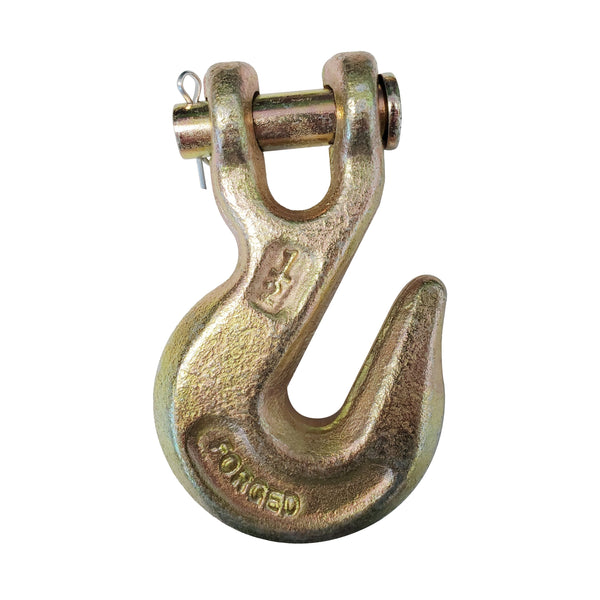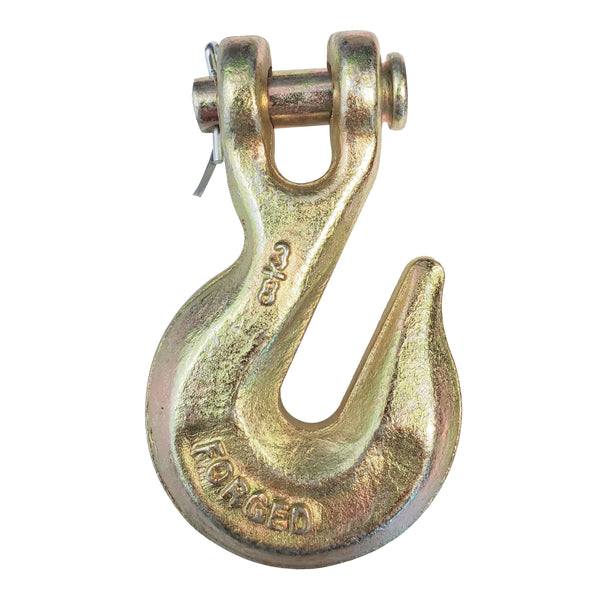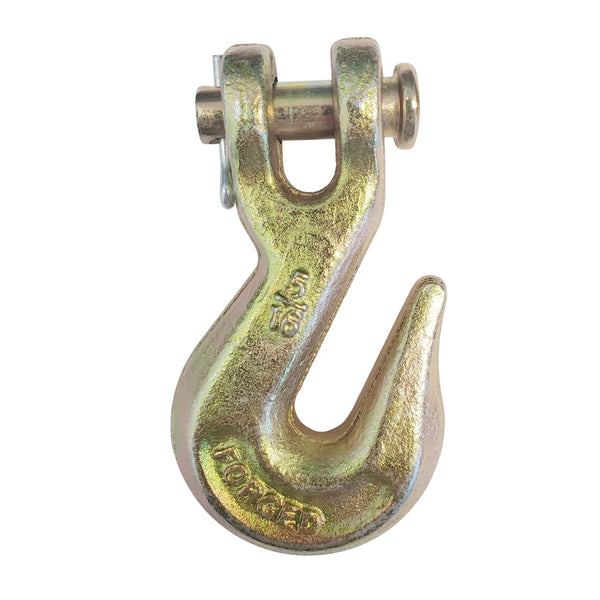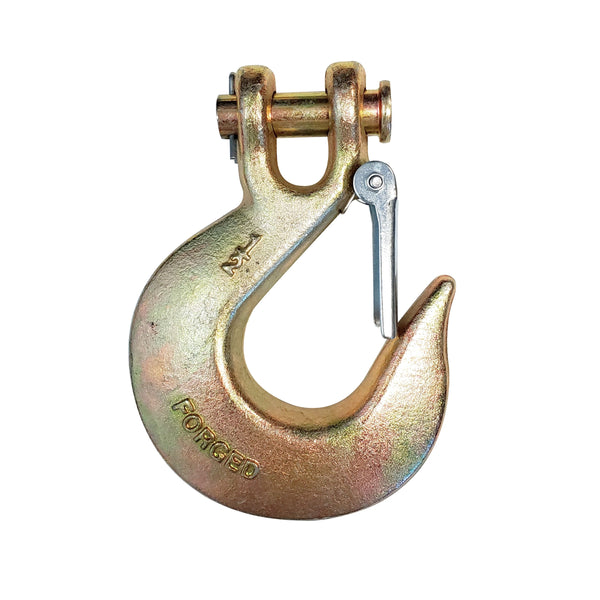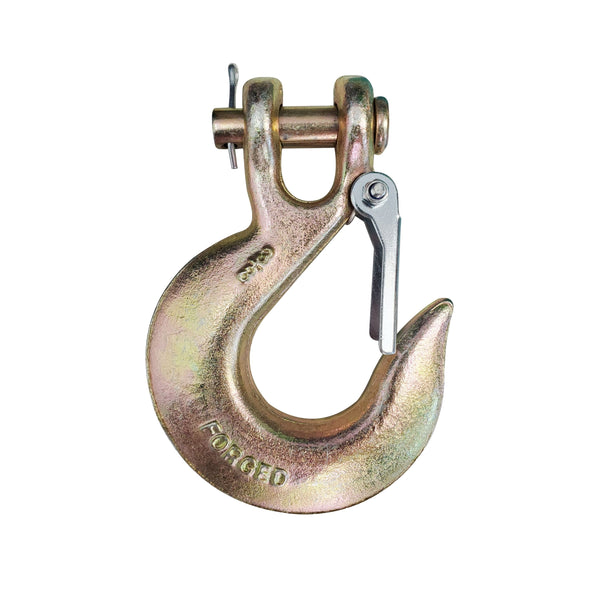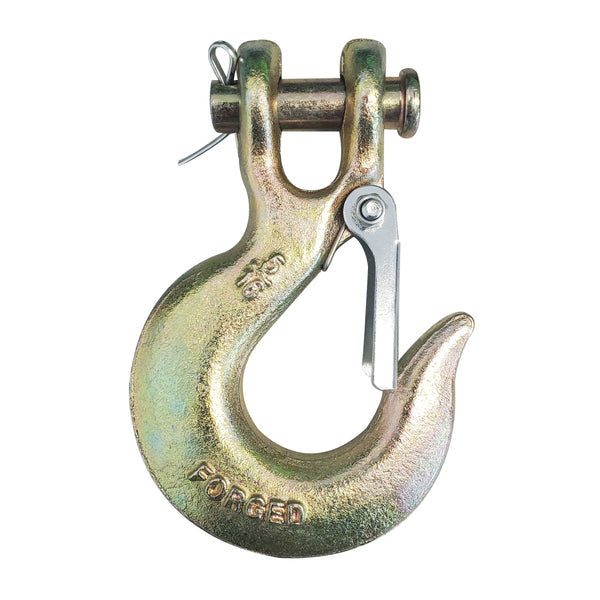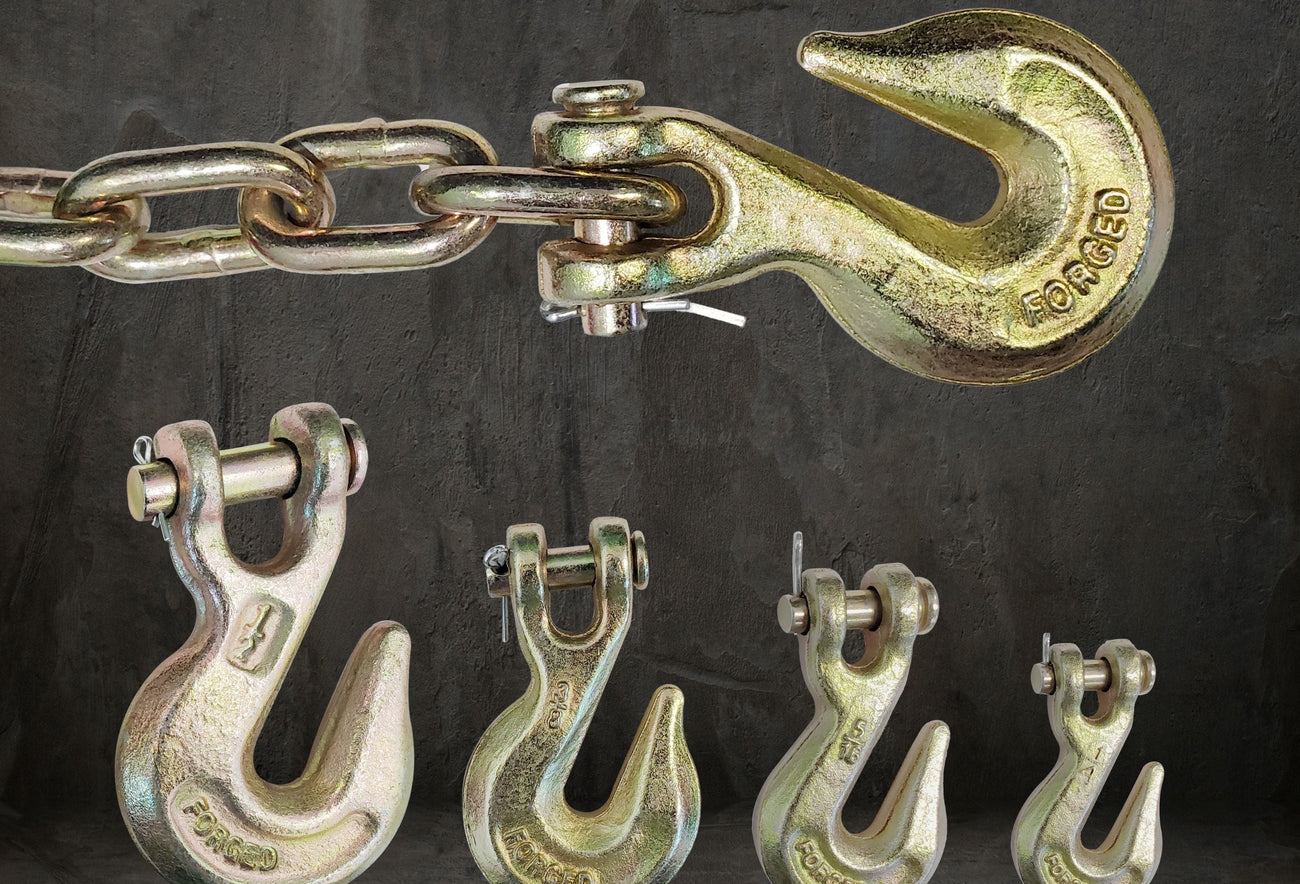
When it comes to securing heavy loads on flatbed trailers, trucks, and industrial equipment, having the right chain hook is crucial. Two of the most essential hooks in cargo securement are the clevis grab hook and the clevis slip hook. Both are designed for use with Grade 70 transport chains, but they serve different purposes depending on your needs.
In this detailed guide, we’ll explore the differences between clevis slip hooks and grab hooks, their working load limits (WLL), and their best applications. Whether you're in transportation, logging, or industrial lifting, understanding these hooks will help you choose the right one for your job.
What Are Clevis Hooks?
Clevis hooks are a type of rigging hook featuring a U-shaped clevis with a removable pin for easy attachment. They are widely used in lifting, towing, and load securement due to their strength, versatility, and quick-connect design.
Key Features of Clevis Hooks:
- U-shaped clevis with a removable pin for fast attachment
- Designed for Grade 70 chains (also available in Grade 43 and Grade 100)
- Available in grab hook and slip hook configurations
- Used in transportation, construction, and industrial applications
Clevis Grab Hooks vs. Clevis Slip Hooks: What’s the Difference?
Key Features:
- Non-slip engagement with chain links
- Fixed positioning capability
- Clevis base for pin-secured attachment
- Grade 70 construction (3,150-11,300 lb WLL depending on size)
Primary Applications:
- Transport chain shortening on flatbed trailers
- Fixed anchor points in logging operations
- Load stabilization where chain movement must be prevented
- Replacement hooks for damaged chain ends
Best Paired With:
- G70 Binder Chains for secure load fastening
- Transport Chains requiring fixed-length connections
- Logging Chains needing positive link engagement
Pro Tip:
G70 Clevis Grab Hooks feature a precisely engineered throat profile that matches standard chain link dimensions, ensuring maximum holding power without damaging the chain.
Key Features:
- Adjustable chain length capability
- Optional safety latches (spring-loaded or manual)
- Smooth throat radius for chain movement
- Grade 70 construction matching transport chain ratings
Primary Applications:
- Dynamic load adjustments during transport
- Binder chain applications requiring tensioning
- Variable-length connections in rigging systems
- Replacement hooks for worn chain ends
Best Paired With:
- G70 Binder Chains for tensioning applications
- Load-binding systems requiring frequent adjustments
- Transport chains where load shifts may occur
Tip:
Safety Note: While slip hooks allow chain movement, our latch-equipped models provide an extra layer of security against accidental disengagement during transit.
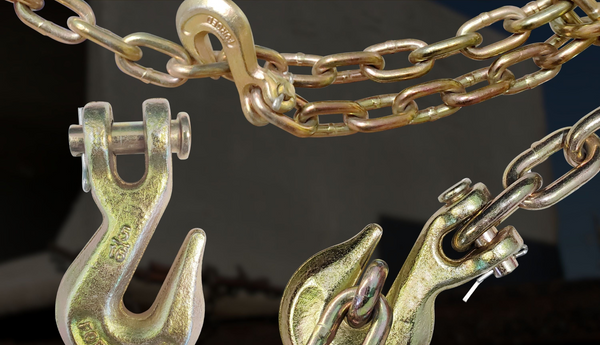
Selecting the Right Hook for Your G70 Chain System
Selecting the Right Hook for Your G70 Chain System
Choose a Clevis Grab Hook When:
- - You require a permanent attachment point
- - Chain shortening is necessary
- - Load shifting must be prevented
- - Replacing damaged chain ends
Opt for a Clevis Slip Hook When:
- - Frequent tension adjustments are needed
- - Using with binder chains
- - Loads may settle during transport
- - Quick length modifications are valuable
Expert Recommendation: For complete transport chain systems, we suggest keeping both types on hand—grab hooks for fixed anchor points and slip hooks for adjustable connections.
Quality Matters: Why Grade 70 Compatibility is Crucial
All our clevis hooks are engineered specifically for use with Grade 70 transport chains, ensuring:
- Matching strength ratings
- Compatible dimensional tolerances
- Uniform working load limits
- Corrosion-resistant finishes
Remember: Never mix hook grades with chains—using a Grade 70 clevis hook with anything other than G70 chain compromises safety and violates industry standards.

